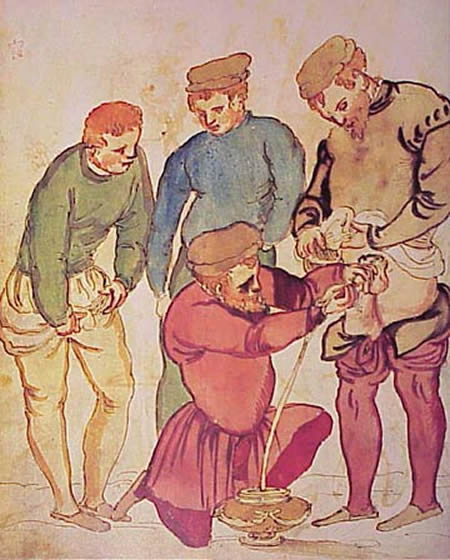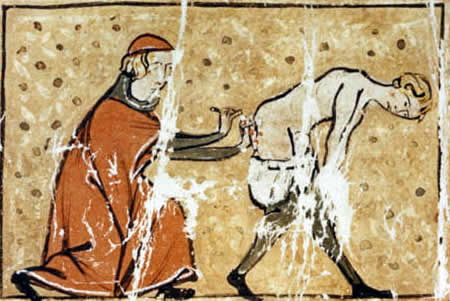The 5 mainly hurting Medical Treatments of the Middle Ages
Medical treatment in the Middle Ages was very excruciating because of the absence of soporific and appropriate therapeutic information of the specialist. The Middle Ages was a period loaded with fascinating history, rich workmanship, changing rationality, epic saints, and even a touch of enchantment. Be that as it may, it was anything but an exceptionally lovely period to be a restorative patient. The basic method to diminish torment among wiped out individuals was to deliver more agony upon them, and after that want to the stars for a touch of good fortune. Priests with next to zero involvement, besides mutilating creatures and approaching a couple of medicinal books, performed medical procedure on individuals. The medication was essential, and the frightful disease that tormented those occasions was intricate. At last, this prompted the formation of some exceptionally horrifying medicinal medications.
1. Eye surgical treatment

Amid the beginning of the Middle Ages, specialists utilized an agonizing procedure called "Needling" to perform waterfall medical treatment procedure. It included a thick level needle, which a specialist would push straightforwardly into the edge of a man's cornea, without any sedatives, aside from possibly a measure of unpleasant red wine.
The thought behind this strategy was to drive the obscure focal point once again into the least piece of the eye, which would result in a reasonable student. Be that as it may, the debilitated patient was ordinarily left with an unfocused eye, similar to a camera with no focal point. The measure of vision would just enable a man to peruse the enormous letters found in present-day eye tests. Insufficient to peruse the Bible, but rather enough to furrow a field.
2. Metallic Catheters

Catheters were utilized in medieval occasions to soothe excruciating urinary maladies. Back then, there was an absence of anti-toxins and an overflow of venereal infections, for example, syphilis, such a significant number of individuals experienced the burdens of blocked bladders. The medieval catheter treatment comprised of a metal tube, which was horrendously embedded through the urethra, and afterward into the bladder. At the point when a tube couldn't enter the bladder of a man, specialists utilized other similarly excruciating strategies.
Basic kidney stone treatment comprised of a doctor's right hand sitting over you, while you had your legs lashed to your neck. As the colleague held you firmly, the doctor would then embed two fingers up your rectum, and press a clench hand against your pubes until the point that he found a hard pellet that would flag a stone. The stone was then separated through a man's bladder utilizing a sharp instrument.
3. Bloodletting

If you visited a doctor during the Middle Ages, regardless of your illness, he would have probably prescribed you with the classic bloodletting treatment. Bloodletting was as common back then as cold medicine is today. If a patient went in with a mild headache and a sore throat, it was common practice for a physician to open a vein with a lancet, and then let the blood flow freely into a container. Bloodletting was so common, that even barbers of the era began to offer the service, along with stylish trims and shaves. Some people would have the treatment several times a year, as a way of staying healthy.
4. Saint Fiacre’s Illness

St. Fiacre is known as the "benefactor of hemorrhoids." The story says that St. Fiacre, a seventh-century Irish priest who experienced the malady, sat on a hard shake and was marvelously restored of his disease. From that point forward, the stone ended up known as St. Fiacre's Rock. Some medieval specialists who put stock in the story would send their patients to sit on the well known shake for a couple of hours to fix themselves of the illness.
As a pointless treatment, notwithstanding, it was not so difficult as what different less superstitious specialists recommended their patients. The more logical priests would embed an intensely hot iron tube up the individual's rectum and afterward consider it daily.
5. Trepanning

Trepanning is a surgery that includes the boring or drilling of an opening into the human skull. This difficult gap uncovered the durra mater, an external layer of the cerebrum, which doctors use to treat a variety of various medical issues.
Specialists utilized this training in the Middle Ages to treat sicknesses like epilepsy, headaches, and an assortment of mental issue. In the event that you were experiencing sorrow, a little gap to the head was all together. Sadly, the opening to the head normally presented the mind to airborne germs, and it frequently demonstrated lethal for patients.
Comments
Post a Comment